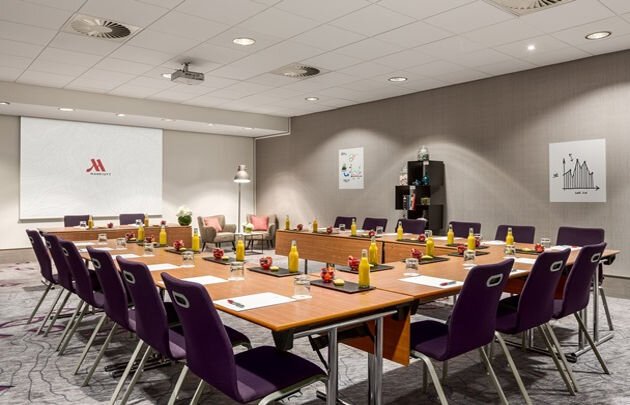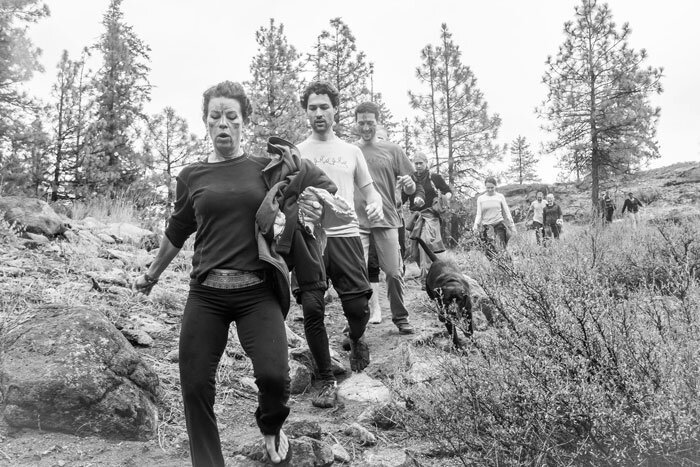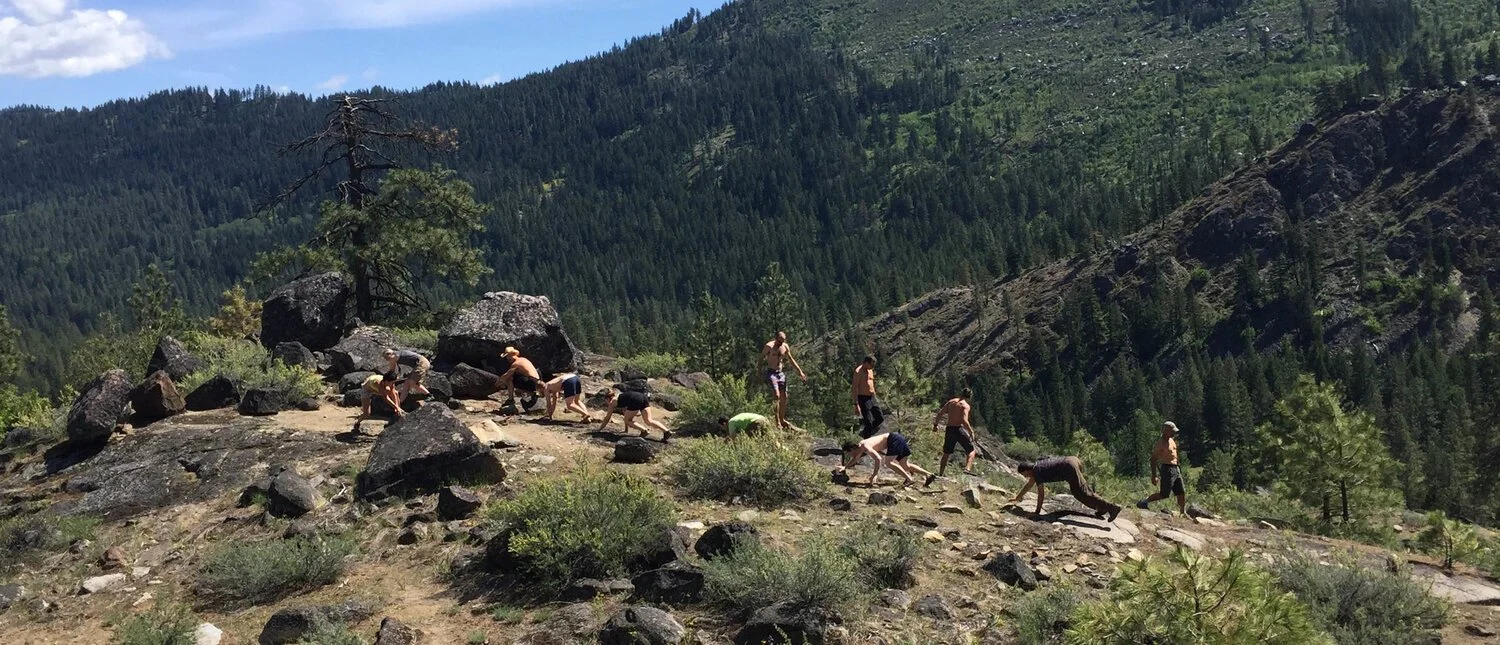The outback solution
a living alternative to death by continuing education
You’ve been there. Year after year, after soul-crushing year.
Your professional organization requires that you keep your certificate current, so you’ve got to show up and get your credits. So you book your flight, swipe your card and make the journey. And then, most likely, you sit and suffer.
Talking heads speak from behind the podium, disembodied voices deliver pre-packaged, sanitized content. Sometimes there’s a nugget of insight that sticks in your consciousness, but mostly it’s an excruciating grind of abstraction that just doesn’t connect with much of anything. You have a few conversations in the lobby and listen to some pitches by people trying to drum up business, but mostly you go home feeling empty.
For every profession that touches on health and the human body, the experience is nearly identical. The event takes place in a big name hotel, close to an airport and a freeway. The entire building is climate controlled and sealed off from the natural world. No soil, no sky, no wind, no stars. And with the exception of some greenery in the lobby, no plants. (As a biologist would describe it, it’s all in vitro, Latin for “within glass.”) If you try to go for a walk, you’re confronted by miles of asphalt, concrete and raging vehicles. Sleep is compromised by noise and the ever-present light from electronics and smoke alarms. There’s food to be had, but it’s all “space food” of unknown, probably industrial origin. And everywhere you go, people are on their phones, oblivious to the present moment. All of which makes for a truly alien experience, one that leaves your body out of touch with the very qualities that keep it healthy, whole and ready to learn.
Veteran conference attendees have grown accustomed to this experience and have lowered their expectations. No one really expects to be transformed at a conference. No one expects to be inspired or challenged to some new level of consciousness. And so people tune out. Presentations become background noise for more interesting social conversation or screen time. In fact, participants routinely disrespect both presenters and the process itself, knowing full well that the only thing that truly matters is getting the certificate.
The experience is made a thousand times worse by the popular practice of concurrent sessions. Instead of bringing everyone together for a shared tribal experience, participants are offered a buffet of speakers in different conference rooms. In theory, this offers valuable choice, but it also dilutes the experience and destroys social cohesion. As participants drop in and out of sessions, engagement falls apart. No one is truly focused.
All of which adds up to some glaring disconnects, especially in the world of health and medical education: Conference presenters speak to sedentary audiences about the medical benefits of vigorous physical movement; lecturers in windowless conference rooms talk about the health benefits of going outside and experiencing nature; experts offer research about the benefits of social connection and engagement, all to distracted, disconnected, drop-in attendees. The talk is there, but the walk is nowhere in sight.
Sadly, this conference-hotel-lecture model is growing increasingly entrenched across the modern world. The template is firmly in place–just secure a hotel conference facility, build a webpage, spread the word, and set the operation in motion–no creativity or risk required. Everyone wants a better experience, but we’re stuck in a rut of cultural habit and institutional inertia.
If we were really serious about reforming continuing education, we’d redesign the entire experience from scratch, building on the health and medical knowledge that we’ve discovered (or re-discovered) over the last few decades. Instead of speaking exclusively to the head, we’d immerse participants in a full-spectrum experience in which people actually live the meaning. In other words, we’d make the experience holistic, engaging and immersive.
First, we’d find a setting that was consistent with the message that we’re trying to deliver. In the world of health and medicine, this means pulling people away from the distractions of the modern, alien environment and putting them back in contact with soil, plants, sky and natural light. Obviously, this makes for some serious inconvenience; it’s no easy matter to plan and execute an overnight gathering in a remote, wild area. But the need is obvious. If we’re going to do authentic health education, the place to be is on the ground, in habitat. Or as life scientists might put it, in vivo.
Naturally, we’d give the body its due with vigorous physical movement. We’d run and jump and leap and best of all, we’d practice movement arts that put people in direct, engaging contact with one another. In other words, we’d be socially physical. We’d breathe hard, sweat and laugh, and then we’d take some time to pay attention, which is to say, we’d meditate. We’d sit in one place and focus on our breathing, feel what we’re feeling and give ourselves the gift of equanimity.
To be sure, this full-spectrum experience would include presentations and yes, even some cognitive content, facts, figures and reason. But instead of delivering dead, Cartesian abstractions to distracted audiences, we’d tell stories that connect with the human experience. Our material would be sophisticated, but it would also be relevant and relatable.
And then, after all that action, we’d be hungry and eager for some good conversation. But instead of eating over-priced “space food” from a hotel restaurant, we’d cook and serve one another real food with authentic meanings. Our “earth food” would have a story of source, habitat and people. We’d have engaging conversations with one another and maybe later, some drumming and dancing around the campfire.
Of course, it’s a lot of work to produce this kind of experience. You’ve got to find a location, organize a camp and hardest of all, get people accustomed to the idea of going outdoors for a conference alternative. But this is precisely as it should be; the inconvenient truths of our day call for daring, inconvenient action. That means avoiding the easy path of hotel conferences and plastic experiences. It means going out and doing something outside the bounds of conventional culture. It means taking a risk. It’s a lot of work, but this is precisely where the meaning is.
If all this makes sense to you and you’d like to be part of a more progressive and relevant form of continuing education, let’s join forces and make it happen!


